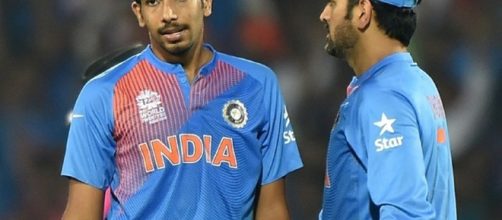As the BBL reaches its climax and the IPL gears itself up for its 2017 edition, you'd be forgiven for seeing One Day cricket as a sideshow. For many a year it has continued to be fashionable to dismiss the T20 format as "not cricket," as though the skills required to succeed in the short format do not stack up with the levels required for the traditional Test and One Day environments. For the initial few years, there existed some truth in such opinions.
Test Cricket was on the back foot, struggling to attract crowds outside of the traditional Test playing nations.
The paying public became accustomed to immediate entertainment, not long, drawn-out days of slow play. The big hitting in T20 was not transferable to the fifty over game, with batsmen impatient to score rather than adapting to the situation or the environment.
How times have changed
Thursday's second ODI between India and England showed how far the format has come, for the better, and what a game it was. As India looked to tie up the series with one to play, England were looking to ensure they they could take the Indians to a decider on Sunday.
As the crowds flocked in to see their new heroes, such as Kohli and Rahul, it was fitting to see the two old-timers of the Indian side, namely Yuvraj Singh and Mahendra Singh Dhoni outshine their young counterparts and show their critics (of whom there are many) that there's still plenty of life left in the old dogs.
The partnership between the two stalwarts brought back memories of their sensational efforts at the inaugural T20 World Cup in 2007 alongside the historic 2011 World Cup Final. For Yuvi specifically, this was even more meaningful after his well documented battle with cancer and his celebration (or lack thereof) when completing his century showed that this was something for him to savor more finely than anything before it.
England battled
The major impact of T20 on the One Day game has been that of the requirement, and ability, for teams and players to score at a rate a lot higher than had previously been acceptable. Historically, a score of 250 was deemed a tough one to chase, the modern game would consider anything less than 300 a poor effort.
Combine this with the tendency to prepare flat pitches and bring in the boundaries to almost schoolboy levels, and cricket today is a batman's dream. Who would want to be a bowler and take such punishment!
Thus, it was by no means a foregone conclusion that India had the game done and dusted with their score of 381. England came out firing and produced a fantastic run chase, keeping the Indian fans eerily quiet until the very end. Eoin Morgan produced a performance of the highest quality, bringing his form from the BBL with him to the subcontinent, and he was supported by the the flair and excitement of youth through Roy, Root, and Ali. To fall less than twenty runs short was a stunning achievement, yet England will still be disappointed at having failed to eclipse the required total.
Disappointment, having scored 366, shows just how far the game has come.
There is a lot to be said of keeping experience on a side, and there are plenty who would argue that success is achieved through the no-fear attitude of youth. In reality, what this series has shown is that, to be truly successful, it's the blend of both that makes a decent side truly great, and each of these nations have talent in both areas. Let's hope they don't disappoint in Kolkata on Sunday!

